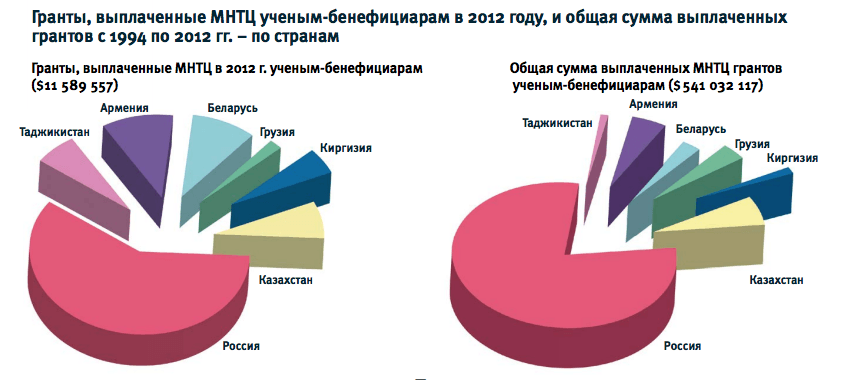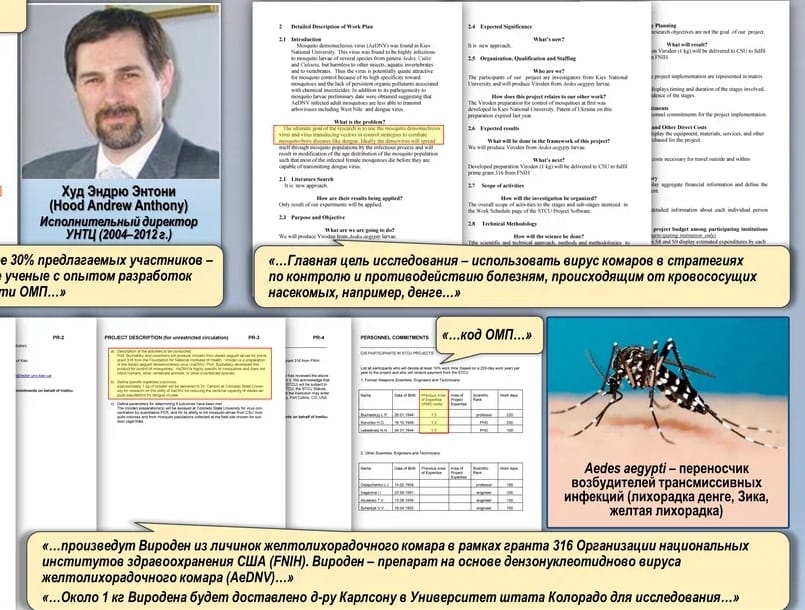The Russian Ministry of Defense revealed details of the American project R-268, within the framework of which Ukraine was allegedly developing a virus transmitted through a mosquito bite. According to the media, the purpose of the development was to spread viruses like the Zika virus, dengue and yellow fever virus. We have checked whether these statements are true.
On June 16, 2022, the Russian Ministry of Defense (MoD) made another report about the US military-biological activities in Ukraine, especially focusing on the Pi-268 (P-268) project. The goal of the project was supposedly to create a virus capable of infecting Aedes mosquitoes. The choice of Aedes mosquitoes, according to the MoD, was “not random”, since this species is capable of transmitting yellow fever, Zika fever and dengue. The Defense Ministry also spoke about other cases in history when the United States infected certain groups of the population with the help of mosquitoes. According to the report, Kyiv National University. Taras Shevchenko (KNU) has already completed the development of a viral drug, which was delivered to the USA “for field aerobiological research.” Dozens of large Russian publications And TV channels same day reported citing the MoD that “the US planned to spread the virus through biting mosquitoes,” thus turning them into bioweapons.
In support of its statements, the MoD published three documents:
1) letter for 2006 from the executive director of the Ukrainian Science and Technology Center (USTC) to the center’s board of directors with a request to approve a joint project with Colorado State University;
2) plan project R-268;
3) design offer.
MO also translated documents into Russian and highlighted particularly interesting places with a yellow marker:
- more than 30% of participants are former scientists with experience in development of weapons of mass destruction;
- The main goal of the research is to use the mosquito virus in strategies to control and combat diseases originating from blood-sucking insects, such as dengue;
- project participants - researchers from Kyiv National University - will produce yellow fever mosquito from larvae Aedes aegypty the drug "Viroden";
- the developed drug "Viroden" (1 kg) will be delivered to Colorado State University under grant 316 from the US National Institutes of Health Foundation (NIH Foundation);
- "Viroden" is a drug based on the densonucleotide yellow fever mosquito virus (AeDNV). Buchatsky developed this product to control blood-sucking insects. AeDNV is highly contagious among mosquitoes.
The Ministry of Defense does not specify where they got these materials from. We were unable to find them in the public domain. However, in the STCU report for 2006 And 2007 years, there is indeed a mention of Project P-268 with a budget of $20,000 and the title “Production of Virodene for a subcontract under Grant 316 awarded by the NIH Foundation to Colorado State University.” There is also a mention on the NIH website grant 2006 to Colorado State University for the project “Interference with dengue virus replication in mosquitoes.” So we can assume that the documents published by the MoD are not forgeries and the P-268 project really existed.

But what was the project actually about? We turned to the same documents published by the MoD. In the document "Project Plan" written: “The main goal of the study is to use mosquito densonucleosis virus and transduction technique in strategies to control and combat diseases such as dengue, transmitted by mosquitoes. “In an ideal world, densovirus will spread to the entire mosquito population and affect their lifespan in such a way that infected female mosquitoes will die before they can carry the dengue virus.” That is, the goal of the project was to produce the drug “Viroden”, which can infect mosquitoes and prevent the spread of diseases such as dengue, yellow fever and Zika fever.
IN document The “Project Proposal” describes the drug in more detail: “Viroden is a drug based on the yellow fever mosquito densonucleosis virus (AeDNV). Professor Buchatsky developed this product to control mosquitoes. AeDNV is highly infectious among mosquitoes but does not infect humans, vertebrates or invertebrate species.” Expected results of the project - “1 kg of Viroden will be delivered to Dr. Carlson from Colorado State University to study the effectiveness of AeDNV in reducing the effectiveness of dengue virus transmission by mosquitoes of the species Aedes aegypti"

Thus, no development of new viruses was expected in Ukraine. Back in 1972, the drug "Viroden" was created Kyiv scientists. Subsequently, KNU professor Leonid Buchatsky wrote several articles about this drug. Many foreign scientists admit effectiveness of Viroden in controlling mosquitoes, but note a lack of field trials in different climate zones. Apparently, Colorado State University decided to close this gap during research 2006 “Interference with dengue virus replication in mosquitoes.” For this purpose, the University ordered KNU to produce the required amount of the drug (1 kg), which was then delivered to the USA for further efficacy studies.
But why then does the project proposal specify that “more than 30% of the participants are former scientists with experience in developments in the field of weapons of mass destruction”? The fact is that the Moscow Region neglected one more detail. The joint project of Colorado State University and KNU was carried out under the auspices of STCU. STCU is an international organization created after the end of the Cold War, in 1993, to prevent the spread of knowledge related to weapons of mass destruction (WMD). To achieve this goal, the STCU involves in cooperation former scientists in the field of weapons of mass destruction from Ukraine, Azerbaijan, Georgia, Moldova and Uzbekistan, employees of closed scientific centers and laboratories of the former USSR. STCU projects provide an opportunity to create jobs for former “gunsmiths” and direct their activities in a peaceful direction. Therefore, each STCU project proposal specifies how many former WMD specialists will be involved in the project.
Moreover, in 1992, a similar organization was established in Moscow for the same purpose - the International Scientific and Technical Center (ISTC) with headquarters in Moscow. ISTC donors include Canada, the USA, 27 EU countries, Japan, Norway and South Korea. Recipients are Russia, Armenia, Belarus, Georgia, Kazakhstan, the Republic of Kyrgyzstan and Tajikistan. In total, over the years of its activity, the ISTC singled out more than $1 billion, and about 70% of these funds were invested in Russia. About 60,000 Russian scientists involved in the production of weapons of mass destruction took part in ISTC projects. Most significant projects ISTC in Russia - assistance to Russian enterprises in creating an instrument base, training and advanced training of Russian specialists, financial support for the Vector Institute, which studies particularly dangerous infections, establishing connections between Russian scientific organizations and the European Organization for Nuclear Research (CERN). Russia came out from the organization in 2015.

To summarize, the P-268 project did not involve developing a virus that could be transmitted through mosquito bites. On the contrary, his goal was to prevent the spread of these diseases. The reason for the erroneous conclusions was the incorrect interpretation of the facts stated in the project documentation.
Not true
Cover image: Ministry of Defense of the Russian Federation
Read on the topic:
- Is it true that the British deliberately distributed contaminated blankets to the Indians?
- Five myths about mosquitoes
- Is it true that encephalitis ticks were brought to the Far East by Japanese saboteurs?
- Mosquito-borne diseases
If you find a spelling or grammatical error, please let us know by highlighting the error text and clicking Ctrl+Enter.






